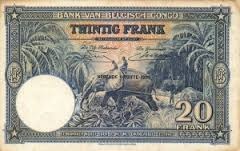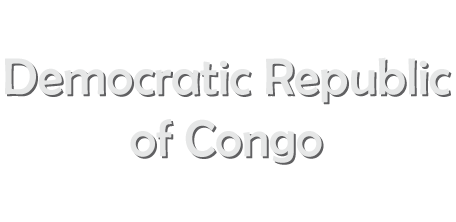
An Africa in miniature, Congo is a land of great contrasts, a country of wild animals, active volcanoes, thick rain forests and lush grasslands and the pygmies. Formerly known as Zaire and also known as the Belgian Congo, it is now officially known as the Democratic Republic of Congo (DRC). The country is named after the longest and deepest river Congo, which crosses the Equator twice, once in each direction. The mysterious swamps and the turbulent river Congo along with the imposing Inga falls challenge the explorer. Livingstone Falls provides the most impressive sight of a waterfall on the mighty river. DRC is a classic example of the co–existence of western culture and African traditions. Kinshasa is its capital city and Congo is sometimes also referred to as Congo–Kinshasa. One of the richest countries, Congo boasts of reserves of diamonds and gold. Let us learn more about this country.
Democratic Republic of Congo (DRC) is a country in Central Africa lying to the north–east of Angola. It borders countries such as Angola (2,646 km), Burundi (236 km), Central African Republic (1,747 km), Republic of Congo (1,229 km), Rwanda (221 km), South Sudan (714 km), Tanzania (479 km), Uganda (877 km) and Zambia (2,332 km). Covering a total area of about 23, 44,858 sq. km, area occupied by land is about 22, 67,048 sq. km and whereas water occupies about 77,810 sq. km. It lies between the geographic coordinates 0°00’ N latitude and 25°00’E longitude. Stretching a coastline about 37 km, it is slightly less than one–fourth the size of the US and comparatively, ranks 11th in the world.
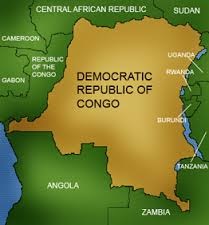
Democratic Republic of Congo (DRC) enjoys a tropical climate. It is hot and humid in the equatorial river basin area whereas cooler and drier in the southern highlands. In the eastern highlands, the climate is cooler and wet. Regions to the north of the Equator experience a wet season from April–October and a dry season from December–February. In the regions, the wet season is from November–March and the dry season from April–October. The terrain is a vast central basin which is a low–lying plateau whereas the eastern part is mountainous. The lowest point of elevation is at the Atlantic Ocean at 0 m whereas the highest point of elevation is at Pic Marguerite on Mont Ngaliema (Mount Stanley) at 5,110 m. The available natural resources are cobalt, copper, niobium, tantalum, petroleum, gem diamonds, gold, silver, zinc, manganese, tin, uranium, coal, hydropower and timber. DRC faces natural hazards such as periodic droughts in the south, seasonal flooding of the Congo River and active volcanism in the east along the Great Rift Valley. Poaching of wildlife, water pollution, deforestation, refugees responsible for deforestation, soil erosion and mining for minerals are causing environmental damage.
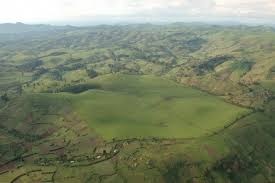
The flora of this eco–region is primarily made of flooded swamps and rainforests. Trees such as raphia palm are extensively found here along with garcinia, manilkara, red cedar and mahogany, oak, walnut and silk–cotton tree. Orchids, lilies, lobelias, gladioli are some of the flowering plants found along with shrubs and variety of euphorbia and landolphia. The amazing rainforests of the DRC contain great biodiversity and rare and endemic species such as bonobo and chimpanzees. This region is home to the endangered western lowland gorilla, eastern lowland gorilla, African forest elephant and okapi. Animals native to the DRC include the African buffalo, Bili ape, bush elephant, civet, mongoose, Congo peacock, zebra, lion, hog, rhino, reedbuck, jackal, hippopotamus, cheetah, francolin, pangolin, giraffe, waterbuck and African palm civet. Bird species includes storm–petrels, tropicbirds, boobies, darters, cormorants, Frigatebird, heron, egrets, ibises, flamingos, Guinea fowl, bustards, sandpipers, parrots and macaws, swans and gulls, sparrows, larks and woodpeckers. Reptiles such as pythons, lizards and chameleon are found here along with insects such as dragonflies, wasps, scorpions as well as the tsetse fly. The rivers and lakes include fish such as cat fish, tiger fish and electric eels.
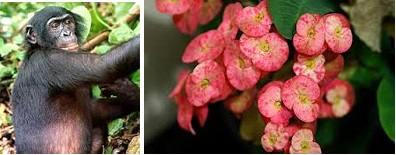
Male leadership and authority is common in political, economic, religious and social institutions. The role of Congolese women depends upon her immediate environment and racial background. Inheritance is passed from mother’s side of the family but women are regarded lower than males on scales of social hierarchy. There is a great societal pressure on young women to marry. In rural areas, men have many wives. Farming, cooking, looking after the children and household, cleaning, gathering firewood and carrying water are all done by women. The village chiefs and community heads occupy an influencing position. Good children are expected to treat their elders with respect and perform the chores without complaints, especially the girls. Boys are sent to an initiation camp for a period of one year .This period culminates with circumcision and festivities making the boys enter the community as men. Casual clothes are permitted. Women always wear skirts. Taking of pictures is avoided. Greetings are very important in the Congolese way of life.
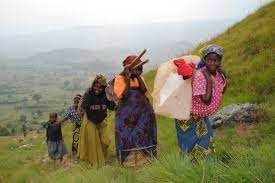
About 50% population of the Congolese (DRC) practice Christianity and are Roman Catholics. Protestants (about 20%), Kimbanguists (about 10%) and Muslims (about 10%) constitute a significant part of the population. Other minority sects include the followers of the syncretic sect and indigenous beliefs. The official language of DRC is French followed by Lingala (lingua franca trade language).Local dialects such as Swahili, Kikongo and Tshiluba are also spoken by the Congolese.
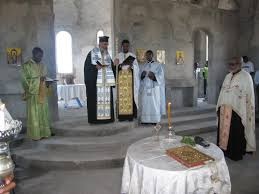
The primary staple food here is the cassava or fufu (manioc tubers pounded into oatmeal like texture) and is eaten out of the community bowl. Side dishes include sweet potatoes, perch, banana and plantains. Meat is a delicacy and luxury reserved for certain occasions. Fish is the primary source of food of people residing near the river banks. The edible treats from the palm tree such as fruits, nuts wine and oil are mostly utilized. Large communal kitchens are organised on riverboats that serve tea and bread for breakfast and rice and beans for lunch and dinner. On special occasions, the family’s only chicken or goat is slaughtered. Traditional beer and palm wine is brewed. Traditionally, men are served first whereas women and children eat later. Eating is only with the right hand.
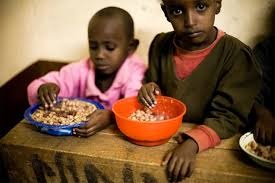
The DRC is a nation endowed with vast natural resources and wealth. The economy is slowly recovering from decades of decline and wars. An uncertain legal framework, corruption and lack of transparency in government policies are long–term problems for the large mining sector and the economy in general. Agricultural produce of DRC are coffee, sugar, palm oil, rubber, tea , cotton, cocoa, quinine, cassava (manioc), bananas, plantains, peanuts, root crops, corn, fruits and wood products. Industries that contribute to development include mining of copper, cobalt, gold, diamonds, coltan, zinc, tin and tungsten, mineral processing, consumer products such as textiles, plastics, footwear, cigarettes, metal products, processed foods and beverages, timber, cement and commercial ship repair. DRC exports diamonds, copper, gold, cobalt, wood products, crude oil and coffee to China, Zambia, Italy and Belgium whereas it imports foodstuffs, mining and other machinery transport equipment and fuels from South Africa, China, Zambia, Belgium, Zimbabwe and France.
